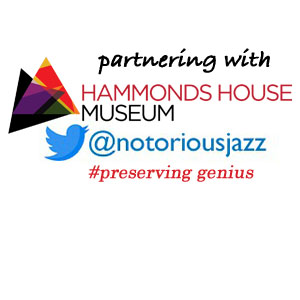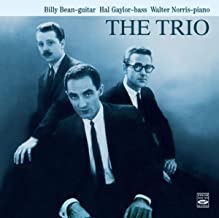
Daily Dose Of Jazz…
William Fredrick Bean was born on December 26, 1933 into a musical family in Philadelphia, Pennsylvania. His mother played the piano, his father was an amateur singer and guitarist, and his sister sang professionally. He started on guitar at the age of twelve.
His father taught him some of the basics on guitar before he received lessons from Howard Herbert. He went on to study with Dennis Sandole for a year. During the late 1940s and 1950s, he performed at venues in the Philadelphia area, until in the mid-Fifties he moved to New York City and recorded with Charlie Ventura and Red Callender. By 1958 he was moving to the West Coast and settling in Los Angeles, California to record for Decca. In Los Angeles, he worked with Buddy Collette, Paul Horn, John Pisano, Bud Shank, Milt Bernhart, Les Elgart, Herb Geller, Lorraine Geller, Calvin Jackson, and Zoot Sims.
Returning to New York City in 1959 after accepting Tony Bennett’s offer to join his band, Bean remained with Bennett’s band for less than one year. Hal Gaylor, who had been Bennett’s bassist, assembled a trio with Bean and pianist Walter Norris, calling themselves The Trio. They recorded an album for Riverside Records in 1961. Finding it difficult to find work, the trio disbanded shortly after recording.
Bean performed with Stan Getz, Herbie Mann, and John Lewis, recording albums with Mann and Lewis. He co-led six recording albums and another 16 as a sideman. Returning to his hometown of Philadelphia, guitarist Billy Bean retired in 1986, and passed away on February 6, 2012.
More Posts: bandleader,guitar,history,instrumental,jazz,music
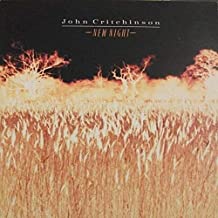
Daily Dose Of Jazz…
John William Frank Critchinson was born on December 24, 1934 in London, England. He worked as a part-time musician with Ronnie Scott, Tubby Hayes, and Jimmy Deuchar, among others. In 1979, at the recommendation of his mentor, Bill Le Sage, he became a member of Ronnie Scott’s Quartet until it folded in 1995. During that time, he worked with many visiting American artists, including Chet Baker, George Coleman, James Moody, Joe Henderson and Johnny Griffin.
In the early 1980s, he had an association with the British jazz fusion duo Morrissey–Mullen, appearing on two of their albums. He recorded with Dick Morrissey and was a member of Martin Drew’s Our Band, with Ron Mathewson, Jim Mullen, and Dick Morrissey.
In 1995, he formed a quartet with saxophonist Art Themen, bassist Dave Green and Dave Barry on drums. When Scott died in 1996, Critchinson formed the Ronnie Scott Legacy with Pat Crumly on saxophone and flute. Later in his life, he played and recorded with saxophonist Simon Spillett.
Pianist John Critchinson, who recorded eleven albums as a leader and was affectionately known as Critch, passed away on December 15, 2017.
More Posts: bandleader,history,instrumental,jazz,music,piano
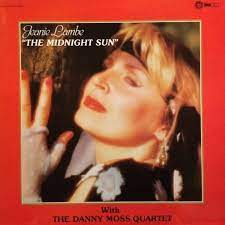
Daily Dose Of Jazz…
Jeanie Lambe was born on December 23, 1940 in Glasgow, Scotland. Her mother was a singer and her father played the accordion in the musical act Douglas, Nicol & Lamb. Her first public performances were with her parents and when she was seventeen, she became a member of the Clyde Valley Stompers.
She was the vocalist with the Alex Sutherland Sextet at Elgin’s Two Red Shoes Ballroom, where she kicked off the Two Red Shoes dances at age 19. Moving to London, England in 1960 Jeanie worked with a variety of jazz bands in the area, including those led by Alex Welsh, Kenny Ball and Charlie Galbraith. In 1964 she married tenor saxophonist Danny Moss and became more well known through her extensive performances at international jazz festivals.
Lambe has performed with modern and mainstream jazz musicians including Cliff Hardie and the UK All Stars Orchestra, Bobby Rosengarden, Monty Alexander, Ben Webster, Budd Johnson, Oscar Peterson, Wild Bill Davison, Kenny Davern, Joe Pass and Buddy Tate.
Suffering ill health, vocalist Jeanie Lambe, who recorded seven albums as a leader, passed away on May 29, 2020 in Perth, Australia at the age of 79.
More Posts: bandleader,history,instrumental,jazz,music,vocal
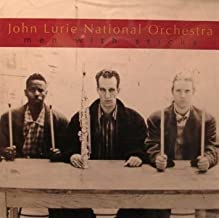
Daily Dose Of Jazz…
John Lurie was born on December 14, 1952 in Minneapolis, Minnesota and was raised with his brother and sister in New Orleans, Louisiana and Worcester, Massachusetts.
In high school, he played basketball and harmonica and jammed with Mississippi Fred McDowell and Canned Heat in 1968. He briefly played the harmonica in a band from Boston, Massachusetts but soon switched to the guitar and eventually the saxophone.
After high school, he hitchhiked across the country to Berkeley, California. Moving to New York City in 1974, he briefly visited London, England where he performed his first saxophone solo at the Acme Gallery.
In 1978 John formed the Lounge Lizards with his brother Evan Lurie on piano. The two of them were the only constant members in the band through numerous lineup changes. In the early 1990s he formed a smaller group, the John Lurie National Orchestra and their work was heavily improvised.
By the early Nineties he was composing the theme to Late Night with Conan O’Brien with Howard Shore, which was also used when O’Brien hosted on The Tonight Show. He has written scores for over 20 movies, including Get Shorty, for which he received a Grammy Award nomination. As an actor he has starred, acted or made cameos in nineteen films and numerous television shows.
Saxophonist, painter, actor, director, and producer John Lurie has suffered debilitating ill health since 2000 with initially baffling neurological symptoms, and from symptoms attributed to chronic Lyme disease. The illness prevents him from acting or performing music, so he spends his time painting. His art has been shown in galleries and museums around the world. His 1980s NYC memoir, The History of Bones, was published by Penguin Random House in 2021.
More Posts: bandleader,history,instrumental,jazz,music,saxophone

Daily Dose Of Jazz…
Paul Desmond was born Paul Emil Breitenfeld on November 25, 1924 in San Francisco, California. His father was a pianist, organist, arranger, and composer who accompanied silent films in movie theaters and produced musical arrangements for printed publication and for live theatrical productions. He started his study of clarinet at the age of twelve and continued while at San Francisco Polytechnic High School. During high school he developed a talent for writing and became co-editor of his high school newspaper.
As a freshman at San Francisco State College he began playing alto saxophone, however, he was drafted into the U.S. Army, where he spent three years in the Army band stationed in San Francisco. After his discharge in 1946 he legally changed his name to Desmond. Working in the San Francisco Bay Area as a backing musician, occasionally with Dave Brubeck.
Following a breakup and a reunion with Brubeck, the quartet became especially popular with college-age audiences, often performing in college settings like on their ground-breaking 1953 album Jazz at Oberlin at Oberlin College. The group played until 1967, when Brubeck switched his musical focus from performance to composition and broke the unit up. During the 1970s Desmond joined Brubeck for several reunion tours, with Brubeck’s sons Chris, Dan and Darius.
He worked several times during his career with baritone saxophonist Gerry Mulligan, guitarist Jim Hall, Chet Baker, and Ed Bickert. Alto saxophone and composer Paul Desmond, who was one of the most popular musicians to come out of the cool jazz scene, passed on May 30, 1977, not of his heavy alcohol habit but of lung cancer, the result of his longtime heavy smoking.
More Posts: bandleader,history,instrumental,jazz,music,saxophone



